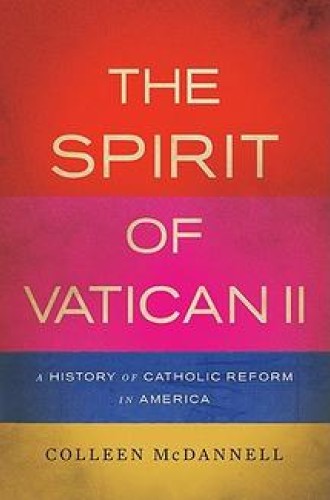The Spirit of Vatican II, by Colleen McDannell
Colleen McDannell confesses that integrating family history with scholarship is not for the faint of heart. In this valiant attempt McDannell tells the story of her Catholic parents in tandem with a discussion of the changes that were played out in the 20th century in the Catholic Church as a whole.
Because of her father's work requirements, McDannell's parents moved frequently. She traces their marriage from the suburbs of Toledo to California to Colorado to West Virginia, and finally to retirement in Florida, and she reconstructs the parochial culture of the various Catholic parishes along the way. She learned that the Catholic passion for the parochial school was a key part of what was called the "parish plant" and that as people became more mobile and the post–World War II suburbs accommodated more diverse populations, the old paradigm of the Catholic neighborhood gave way to a more porous sociological picture.
McDannell also discusses how the structure and iconography of the parish church morphed in response to liturgical changes, especially in light of Vatican II. In passing, she takes account of the slow diminution of the number of priests in parishes and the near disappearance of nuns from school staffs. In a particularly interesting chapter on her parents' life in Los Angeles, McDannell rehearses the titanic struggle in the mid-1960s between Cardinal James Francis McIntyre and the Immaculate Heart Sisters over the sisters' attempt to modernize their way of life. (The cardinal won a pyrrhic victory.)





